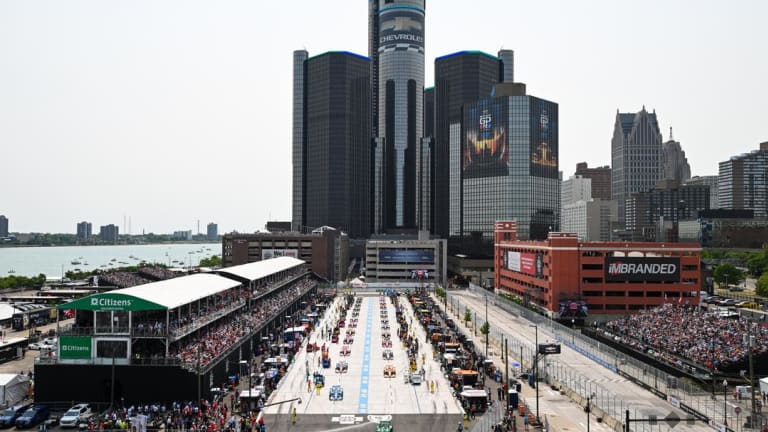
Breaking It Down from the stands: The Detroit Grand Prix returns to the streets

Racing in the Motor City has been a long and winding path. Curves spring up through changes of governing bodies, global recessions and environmental protection. But all these curves brought the Detroit Grand Prix back to the streets where it belongs.
The week after the Indianapolis 500, drivers prepared to face a track they’d never seen before. A 1.7-mile, 10-turn street course. The course was walled due to the layout and architecture of the Renaissance Center, home of General Motors, and surrounding buildings.
Drivers learned their lines and battled it out through the concrete canyons, which were a mix of Nashville’s fast areas and Toronto’s slow zones. Ultimately, drivers were just making comparisons to what they knew. The track ended up being tight, with the walls and competitors bumping up at every available turn and moment.
Detroit is one of the rare cities that has had the opportunity to host street circuits in their downtown area; neighbor and rival Chicago will join this list with the inaugural NASCAR street course this July. The return to the streets was brought in part by a growing list of problems with the nine-turn course used from 1992 through 2008 and then 2012 until last season on Belle Isle Park.
Belle Isle Bottoms Out
The 982-acre island is only accessible by one bridge causing an extreme bottleneck for the event. Since 2012, Roger Penske and Penske Corp promoted the Detroit area race and used the event as a reason to improve Belle Isle, which the city leased to the State of Michigan in 2013 to help ease the pain of the City of Detroit’s bankruptcy. Through Penske’s partnership with the park, the Scott Fountain was saved and refurbished leading to the iconic fountain celebrations of the Belle Isle Grand Prix.
Will Power was the last driver to dance in the fountain as he dominated the single race 2022 weekend.
In comparison this year, Alex Palou sprayed fans with champagne from atop the podium which mirrored the famed Renaissance Center in the background. The Detroit Fire Department took to the Detroit River with a water show of their own, using their high-powered jets to recreate the water show.
#ReturnToTheStreets
This partnership helped rebuild the infrastructure of the park. Now the city and state can focus on bringing back needed wildlife and plant life to the area. Moving to the downtown area has given the track and the city the chance to highlight the area and build more of a festival atmosphere at the track. The Hart Plaza was set up with local and national companies holding activated spaces for both ticket and non-ticket-holding spectators.
The weekend of racing came to a peak on Sunday in front of a sold-out crowd while others lined the ledges of parking garages, free viewing platforms along Jefferson Avenue and the steps of the Detroit Riverwalk. This provided an opportunity to bring racing to those who didn’t know they were fans yet.
The last race on the downtown streets took place under the CART emblem and the course was considerably longer at 2.520 miles. Penske driver Emerson Fittipaldi rocketed his Red Marlboro Chevrolet to victory. Before CART took over the race, F1 used the same course around the Renaissance Center.
While Honda would ultimately take the victory, title sponsor Chevrolet easily chalked the weekend up as a success as their cars, drivers and the sport was displayed against the mirrored walls of their hometown. Chevrolet and Honda split the top 10 equally.
Palou Perseveres
Palou won his second race of the season and sixth of his career by staying out of trouble.
Starting on the pole, Palou led a race-high 74 laps after starting on the pole.
Defending Belle Isle winner Power was Palou’s biggest competition of the race, overtaking the Spanish driver for the lead twice before ultimately finishing 1.1843 seconds behind.
Passing was difficult and the best battle of the race was held between McLaren teammates Alexander Rossi and Felix Rosenqvist, along with Scott Dixon battled for third place. The trio found ways to run three-wide on straights where it was assumed impossible and side-by-side in tight corners. Rosenqvist took the lead among the tandem with five laps to go, completing the podium. Dixon and Rossi settled for top-five finishes.
Palou’s win and Marcus Ericsson's ninth-place finish extended Palou’s points lead to 51 over Chip Ganassi Racing teammate Marcus Ericsson.